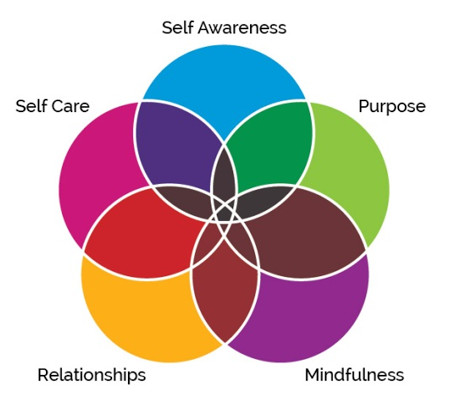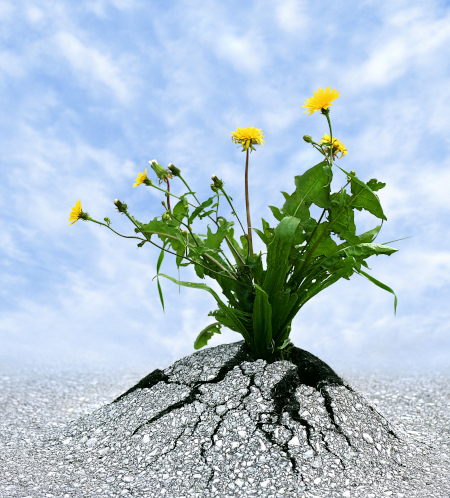 Life, as it is, needs resilience.
Life, as it is, needs resilience.
It is resilience that defines success stories all around us, from individuals to companies and whole communities. For many people lacking in this vital trait, online resilience training offers the opportunity to train, build, and demonstrate personal resilience.
Resilience has been defined variously using two key thoughts: adaptability and bounce-back-ability.
According to the American Psychological Association (APA), resilience is facing setbacks, traumatic or tragic situations, and other life’s failures by adapting to the situations and then bouncing back after they occur.
There are four types of resilience: physical, mental, emotional, and social resilience. The four come about resulting from life, situational or daily problems.
Online resilience training allows you to understand, develop, and practice resilience in a safe setting. When you can train your thoughts and behavior towards becoming positive-focused, then you learn to become purposeful and less likely to focus on the negatives of life.
Online resilience training seeks to provide individuals and teams with the training, skills, and competencies that can help them develop resilience in their daily life, work, or school.
Resilience comes from the ability to take the routine aspects of life that lead to stress and create a positive impact from them so that it promotes physical, mental, and social well-being.
To promote resilience, individuals need to foster these five aspects of life: connect, communicate, build confidence, be committed, and take control. Try a resilience training online course and learn how to promote your resilience.
Resilient is a trait in people that means being able to adapt and cope and bounce back from loss, pain, setbacks, failure, and disappointment. It is borne out of both natural and learned skills, which means developing an understanding of life and its natural trajectory, but at the same time being able to avoid being overwhelmed by it.
A resilient person can face life’s challenges and adversities without crumbling under their weight. It is one who has developed certain skills and strengths that allow them to face situations, cope with them, and recover from these situations and problems.
So, how do you know if you are resilient?
 Resilient people understand that life, as it is, is packed with challenges and that the best way to go about it is to have an open and flexible mind and approach. As such, a resilient person will recover from failure or tragedy naturally or via learned methods.
Resilient people understand that life, as it is, is packed with challenges and that the best way to go about it is to have an open and flexible mind and approach. As such, a resilient person will recover from failure or tragedy naturally or via learned methods.
If you are not sure you have that resilient nature in you, online resilience training is a good place to start building it.
There are several examples of real-life resilience among people, and you can see them all around you.
One great example of resilience was demonstrated in the US in 2001 after the 9/11 terrorist attack. Most people, faced with unprecedented grief, refused to bow to trauma, literally lifting themselves out of the rubble to rebuild their lives again.
Char and Scott Frewing, together with their two sons Kurt and Peter are another real-life story of resilience. When the Frewings’ sons were diagnosed with muscular dystrophy, the family refused to give up hope after learning that the disease had no cure or treatment and patients had no chance of surviving past their 30th birthday.
The family started a foundation that has helped raise funds towards research. Their inspiring story of resilience is an example of positivity in adversity. Read it to see how they make life joyous despite the challenges.
Soldiers are some of the most resilient people.
A resilient woman has several qualities that enable them to face multiple stressors. Even when knocked down, the resilient woman has the strength to still rise or bounce back stronger than before.
Some of the qualities that define a resilient woman include:
· She takes responsibility
· Accepts reality and works towards making the best out of it
· Persistent
· Has perspective- sees the bigger picture
· Confident and trusts herself
· Flexible- she has that “I can grow” mindset
As a skill, resilience forms that part of an individual’s life purpose and outlook. It is that “elastic” attitude that one develops, a positive thinking personality that goes together with the ability to respond to challenges and problems. You may need to learn it and practice it, which is why we have courses on resilience training online.
Resilience is a strength. Developing it as part of your skillset is sure to help you face many of life’s adversities. You can use your resilient personality to better your life despite past failures- think of Thomas Edison who failed many times before finally succeeding in inventing something that is now a part of everyday life.
Professor Genie Joseph of Chaminade University in Hawaii has highlighted three categories of resilience. According to him, there is:
Natural resilience– it’s inborn in all of us and is the will that drives humans to pick themselves up even when they hit their lowest point.
Adaptive resilience: you summon adaptive resilience when you must adapt. It allows people to take on life’s challenges no matter what.
Restored resilience: psychologists refer to this as learned resilience because it’s achieved via training. It is useful in restoring the natural resilience that may have been lost along life’s bumpy road.
 The symbol of resilience is the shape of the helix (or spiral). You will find this symbol in all areas of life, every DNA. It is the underlying structure in plants, animals, and even galaxy formations.
The symbol of resilience is the shape of the helix (or spiral). You will find this symbol in all areas of life, every DNA. It is the underlying structure in plants, animals, and even galaxy formations.
The helix is known as a symbol of growth, strength, and stability- all aspects of resilience.
Practice resilience by developing and maintaining a purposeful outlook and then demonstrating that resilience. Because resilience is something ordinary in life, the best way to practice it is through your thoughts, actions, and behavior.
Another practical way of practicing resilience is through reflection and mindfulness exercises. Take time to think about what matters to you to draw sense out of it when faced with challenges or problems.
A 2014 study found that in practice, things such as spending time with friends, showing compassion in difficult times, or learning a new skill to cope with a circumstance are all ways of practicing resilience.
As noted above, resilience is when you can withstand setbacks and other adversities, bouncing back stronger and in better shape than you were before sometimes.
If you are wondering how you can demonstrate resilience, an example includes a worker who continues to perform their duties despite emotional pain.
Another example of how you can demonstrate resilience is by refusing to portray yourself as a victim in failed relationships.
 There are 5 skills you can use to build your resilience: (1) self-awareness (2) purpose (3) self-care (4) mindfulness (5) build positive social relationships.
There are 5 skills you can use to build your resilience: (1) self-awareness (2) purpose (3) self-care (4) mindfulness (5) build positive social relationships.
This last skill is critical, as it takes time to build resilience, which means practicing it even when you struggle will help you develop and strengthen it.
The six resilience competencies are self-awareness, optimism, mental agility, self-regulation, strength of character, and connection.
Surveys have shown that nearly half of workers do not demonstrate resilience at any given time. This is bad for companies and businesses, especially if the result is an impact on productivity. Luckily, there are resilience training courses that employees can look to for the development of resilience at the workplace.
Examples of resilience at work include employees being able to cope with workplace changes, including new leadership that may exert added pressure to perform. Resilient workers perform even better under the additional anxiety, using any bad experiences to become better at what they do.
Critical incident stress management training online offers resilience coaching that can go a long way towards helping you at the workplace.
Research has shown that our emotional well-being, skills, behaviors, training, and education are some of the factors and components that determine a resilient person. When taken as a whole, the study showed that the factors fall into six distinct domains of resilience:
Vision
Vision relates to your goals, life purpose, and clarity of what you are and therefore focus. It is the most important of the domains as it allows you to align your goals and personal drive, hence resilience.
Composure
Calmness and emotional control will allow you to notice the bigger picture as well as the small details. This way, instead of flaring or disregarding, you become proactive and interpret situations.
Reasoning
You act after consideration, which can include developing optimism while remaining open to disappointment. Innovativeness when faced with problems, accepting outcomes, and seizing opportunity out of challenges are more keys to success.
Tenacity
Tenacity is all about persistence, learning from your mistakes, and taking another forward step. Realize that there are likely to be bumps ahead and have the willingness to persist to achieve success.
Collaboration
Develop a social connection with others, offer and seek support, know that you are not alone. Building positive relationships is the key to becoming resilient.
Health
This is the foundation of your overall well-being. It is good to keep healthy through what we eat, exercising, and sleep. Good health becomes an enabler, giving you that foundation to go on and focus on your vision and what you need to realize it.
When you are resilient, you exhibit behavior that is consistent with that trait. For instance, you will view setbacks as only a temporary pause and turn each such setback into an opportunity. You are also able to take control of and manage your emotions, with the realization that there are things you can control and those you will not be able to.
Spiritual resilience allows you to develop and maintain positivity by drawing strength and the will to adapt and cope with adversity. It is not about religious affiliations but that realization that there is a higher power that you can look to in times of darkness.
Spiritual resilience is one of the pillars of resiliency and people combine this aspect with personal beliefs and values to cope with life’s challenges and setbacks.
 Stress resilience allows you to more quickly recover from stress and other situations that may be a cause for sadness. Here is how to build stress resilience:
Stress resilience allows you to more quickly recover from stress and other situations that may be a cause for sadness. Here is how to build stress resilience:
Connect and empathize: The American Psychological Association says that building connections and working on your empathy can help you deal with stress as that tells you that life’s challenges are not limited to you.
Seek and accept help: apart from connecting with others, actively seek their help in case of traumatic experiences, or accept their offer to help. Talking to a licensed mental health professional is another way of seeking help and support, especially if the stress is preventing you from living a normal life as you know it (before the traumatic event.)
You can also enroll in an online stress management course and use the skills you learn to build your stress resilience.